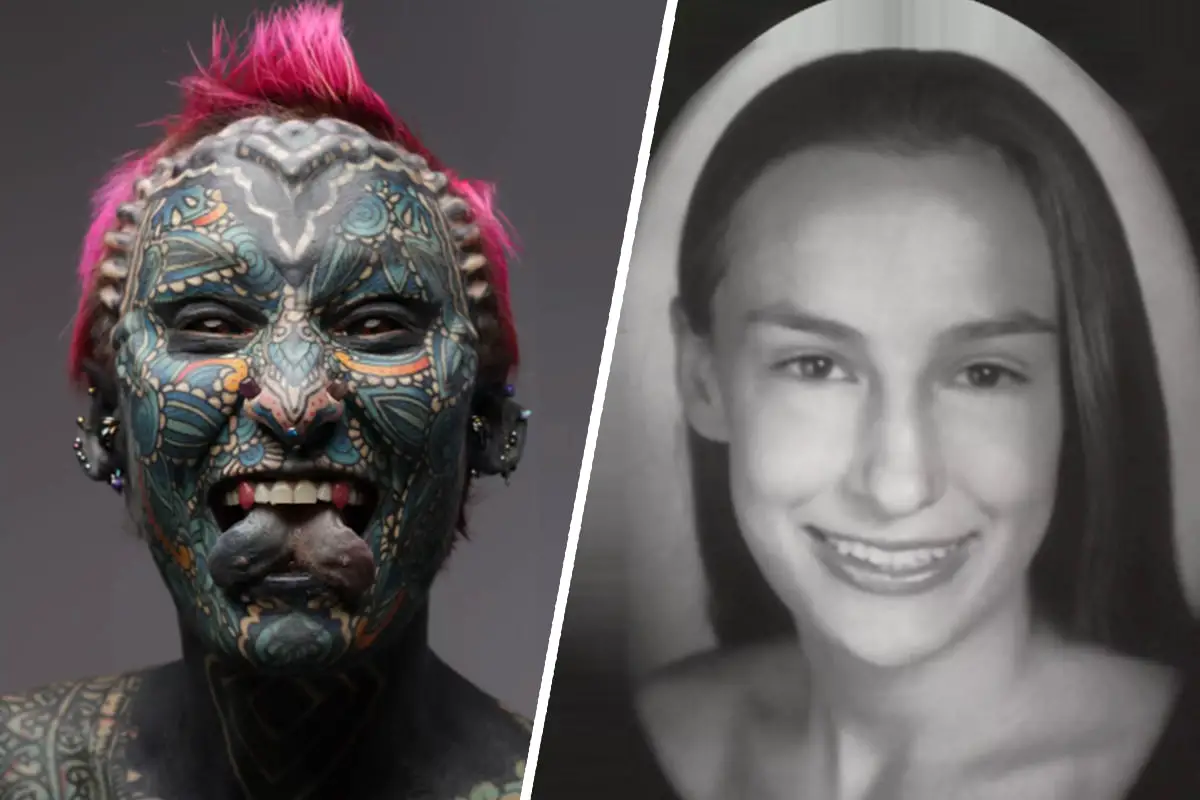Australian Woman’s Battle with Unrelenting Breast Growth: A Personal Struggle

NEW SOUTH WALES, Australia — Paige, a 29-year-old from the quiet suburbs of New South Wales, is facing a daily struggle that most can barely imagine. Despite losing nearly 30 pounds, her breasts have not reduced in size, a relentless condition that has turned her life upside down.
Diagnosed with gigantomastia, a rare disorder causing excessive breast growth, Paige’s story is one of resilience, frustration, and a desperate search for relief. “I’ve lost a lot of weight, close to 30 pounds, and they haven’t changed at all,” she says, her voice tinged with exhaustion. “People think it’s just about losing weight, but it doesn’t work that way.”
A Weighty Burden
At 5’2” and 210 pounds, Paige’s life is shaped by the physical toll of her condition. “I can’t lie on my chest because it feels like I can’t breathe,” she shares, describing how the sheer weight of her breasts compresses her lungs.
The constant back and neck pain is a nagging reminder of her struggle, making even simple tasks like sleeping or standing for long periods a challenge. “It’s not just uncomfortable—it’s painful, all the time,” she adds. For Paige, every day is a battle against a body that feels out of her control.
Defying Assumptions
Paige’s weight loss journey was grueling, but it didn’t bring the relief she hoped for. “I worked so hard to lose that weight, thinking it might help, but nothing changed,” she says. The assumption that slimming down would shrink her breasts is a common misconception she’s tired of hearing.
“People say, ‘Just lose weight, they’ll get smaller.’ Trust me, it doesn’t,” she says with a wry laugh. Her condition, gigantomastia, doesn’t follow the rules of typical weight loss, leaving her feeling stuck in a body that won’t cooperate.
The Emotional Toll
Beyond the physical pain, Paige grapples with the emotional weight of her condition. “You wouldn’t believe the stares and comments I get,” she says. “It’s like people think it’s okay to make jokes or ask personal questions.” The unwanted attention has chipped away at her self-esteem, making social outings a source of anxiety.
“I just want to feel normal, you know? But it’s hard when you feel like everyone’s looking at you,” she admits. Paige’s honesty reveals the hidden cost of living with a condition that’s often misunderstood or trivialized.
A Tough Choice
For Paige, the idea of breast reduction surgery is both a beacon of hope and a source of worry. It’s the only treatment option available for gigantomastia, but it comes with risks and uncertainties. “I don’t want to spend thousands of dollars on surgery just for them to grow back if I have more kids,” she explains.
The fear of wasting money on a procedure that might not last weighs heavily on her. Pregnancy, a potential trigger for further breast growth, adds another layer of complexity to her decision. “It’s like I’m stuck between wanting relief now and planning for my future,” she says.
A Rare Condition in the Spotlight
Paige’s story isn’t an isolated one, though it’s rare. Gigantomastia affects only a small number of women—about 300 cases have been documented in medical literature. Just last month, the International Journal of Surgery Case Reports highlighted a case of unilateral gigantomastia, where one breast grows disproportionately large.
In another striking case, a 19-year-old Canadian woman’s breasts ballooned from a B cup to a triple G after receiving the Pfizer Covid vaccine in 2022. Doctors linked her case to pseudoangiomatous stromal hyperplasia (PASH), a rare condition causing benign breast tissue growth. These cases, though different from Paige’s, underscore the unpredictable nature of excessive breast growth and the need for more research.
Navigating a Judgmental World
Paige’s experience highlights the societal challenges that come with her condition. “A lot of people don’t get it,” she says. “They think it’s a cosmetic issue or something I should be happy about, but it’s not.” The constant scrutiny has made her hyper-aware of how she’s perceived.
“I’ve had strangers tell me I’m lucky, like it’s a compliment,” she says, rolling her eyes. “Lucky isn’t how I’d describe it.” Her candor reveals a truth many overlook: conditions like gigantomastia aren’t just physical—they reshape how you move through the world.
Seeking Support
Despite the challenges, Paige is determined to take control of her narrative. She’s begun sharing her story to connect with others who might be struggling in silence. “If you’re going through this, talk to a doctor,” she urges.
“It’s not something you have to deal with alone.” Paige has found some solace in online communities where women with similar conditions share their experiences. “Knowing I’m not the only one helps,” she says. “It’s like a little lifeline when things get tough.”
The Road Ahead
For now, Paige is weighing her options, balancing the desire for immediate relief with the uncertainties of surgery. “I want to feel like myself again,” she says softly. “I just want to be able to breathe, to move, to not feel like my body is holding me back.” Her determination to keep pushing forward is inspiring, even as she faces an uncertain future. “I’m not giving up,” she adds. “I’m just trying to figure out what’s next.”
A Call for Understanding
Paige’s story is a powerful reminder that rare conditions can have a profound impact on those who live with them. “I wish people would see me, not just my condition,” she says. Her hope is that by sharing her journey, she can spark greater empathy and awareness.
“It’s not about pity—it’s about understanding that this is real, and it’s hard,” she explains. As Paige continues to navigate her life with gigantomastia, her strength and openness offer a glimpse into the resilience it takes to face a condition that few truly understand.










